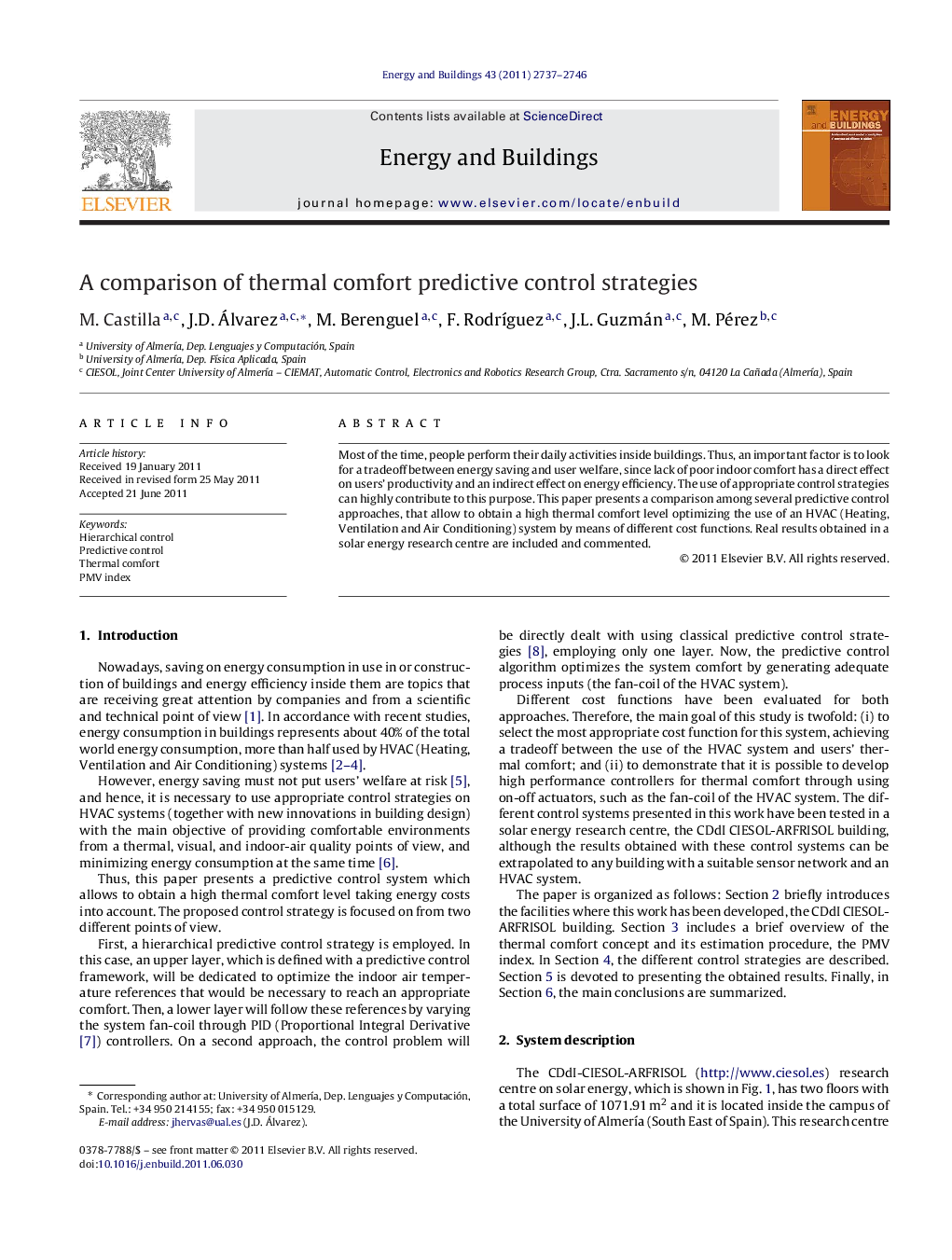| Article ID | Journal | Published Year | Pages | File Type |
|---|---|---|---|---|
| 264084 | Energy and Buildings | 2011 | 10 Pages |
Most of the time, people perform their daily activities inside buildings. Thus, an important factor is to look for a tradeoff between energy saving and user welfare, since lack of poor indoor comfort has a direct effect on users’ productivity and an indirect effect on energy efficiency. The use of appropriate control strategies can highly contribute to this purpose. This paper presents a comparison among several predictive control approaches, that allow to obtain a high thermal comfort level optimizing the use of an HVAC (Heating, Ventilation and Air Conditioning) system by means of different cost functions. Real results obtained in a solar energy research centre are included and commented.
► The implementation of several control strategies in order to control thermal comfort through the PMV index. • The development of hierarchical control systems and MPC control systems. ► All the controllers are able to reject disturbances. ► With this controllers users’ thermal comfort is maintained into its optimal ranges with a significant energy saving.
